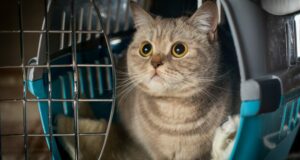
Domesticated cats were carried to Europe by Phoenician trade ships about 3000 years ago. This African subspecies mingled with European subspecies giving rise to the domestic cats we still keep today. There is some debate whether, in ancient times, cats were considered pests or prized predators. It is evident that these pets were valued for their hunting prowess, often tolerated for keeping rodent populations at bay and left free to roam temples and estates for the same reason. Roman soldiers transported cats on conquests to keep grain stores safe. There are also other positive associations of cats in lore that supports that they were more than just a presence, though not perhaps favored as pampered pets as much in Roman society as dogs, birds and other exotic pets at the time. Cats are associated with the goddesses Diana (goddess of the hunt) and Libertas (goddess of freedom). Regardless of how the Romans of that age felt about cats, their place in culture had been established.
Cats continue to freely roam the ancient ruins of metropolitan Rome today, thousands of years after they were left behind by the fallen empire. Today there are more than 2000 colonies of feral cats in the city, populated with an estimated 300,000 individuals. In 2001, city government proclaimed the cats protected as part of the city’s long heritage–cats roaming the Coliseum, the Forum, and the Torre Argentina are permitted free access to these locations. These felines are as much a tourist attraction as the ruins they live amongst, and the people who help to provide for them depend largely on contributions from tourists to fund thier efforts.
 In 1929, the Torre Argentina (the place where Julius Caesar was murdered) was excavated and a cavernous area was opened under the street. The cats quickly populated the protected dwellings and soon the location became a massive cat sanctuary. While the cats continue their work as exterminators feeding on birds, rodents and lizards in the city (as well as scavenging in restaurant alleyways) during the summer, they are also fed and protected by many of the women of the city – known as “gattara”. These dedicated caretakers provided for the cats from 1929 to the early 90’s mostly with their own funds. Over time, the sanctuary evolved into a large scale professional operation, collecting funds and using volunteers to provide medical assistance, spaying, neutering and other care as well as increasing public awareness for the Torre Argentina and other local colonies. Some of the Roman cats are even being offered for adoption if it is deemed that they need prolonged care when examined.
In 1929, the Torre Argentina (the place where Julius Caesar was murdered) was excavated and a cavernous area was opened under the street. The cats quickly populated the protected dwellings and soon the location became a massive cat sanctuary. While the cats continue their work as exterminators feeding on birds, rodents and lizards in the city (as well as scavenging in restaurant alleyways) during the summer, they are also fed and protected by many of the women of the city – known as “gattara”. These dedicated caretakers provided for the cats from 1929 to the early 90’s mostly with their own funds. Over time, the sanctuary evolved into a large scale professional operation, collecting funds and using volunteers to provide medical assistance, spaying, neutering and other care as well as increasing public awareness for the Torre Argentina and other local colonies. Some of the Roman cats are even being offered for adoption if it is deemed that they need prolonged care when examined.
The Torre Argentina Cat Sanctuary continues its important work today, though the recent economic crisis has had a negative impact on their efforts. While their facilities are less than ideal and doing their work can be a struggle, fundraisers and donations have aided in raising much need funds for improvements, as well as medical evaluations, supplies and continuing efforts on mass sterilization and re-homing cats when necessary.
I wonder if the ancient Romans had any idea that common cats would be flourishing thousands of years after their empire fell. Chances are these animals will outlast the architecture they inhabit, too, a perpetual legacy to an empire in ruins. You can contribute to the cause! Like local shelters the Torre Argentina Cat Sanctuary is in need of funding, supply donations, volunteers, and other assistance in their cause.
Cat Mosaic from Pompeii image referenced from wikipedia and originally posted by Mossimo Finizio
Torre Argentina image referenced from wikipedia and originally posted by Helix84
 That Pet Blog That Pet Place Pet Blog
That Pet Blog That Pet Place Pet Blog



2 comments
Pingback: Best Cat Training Guide,Cat Training Guide
Pingback: Ancient Romans: The other people who worshipped cats. - Donné Cat Behaviorist